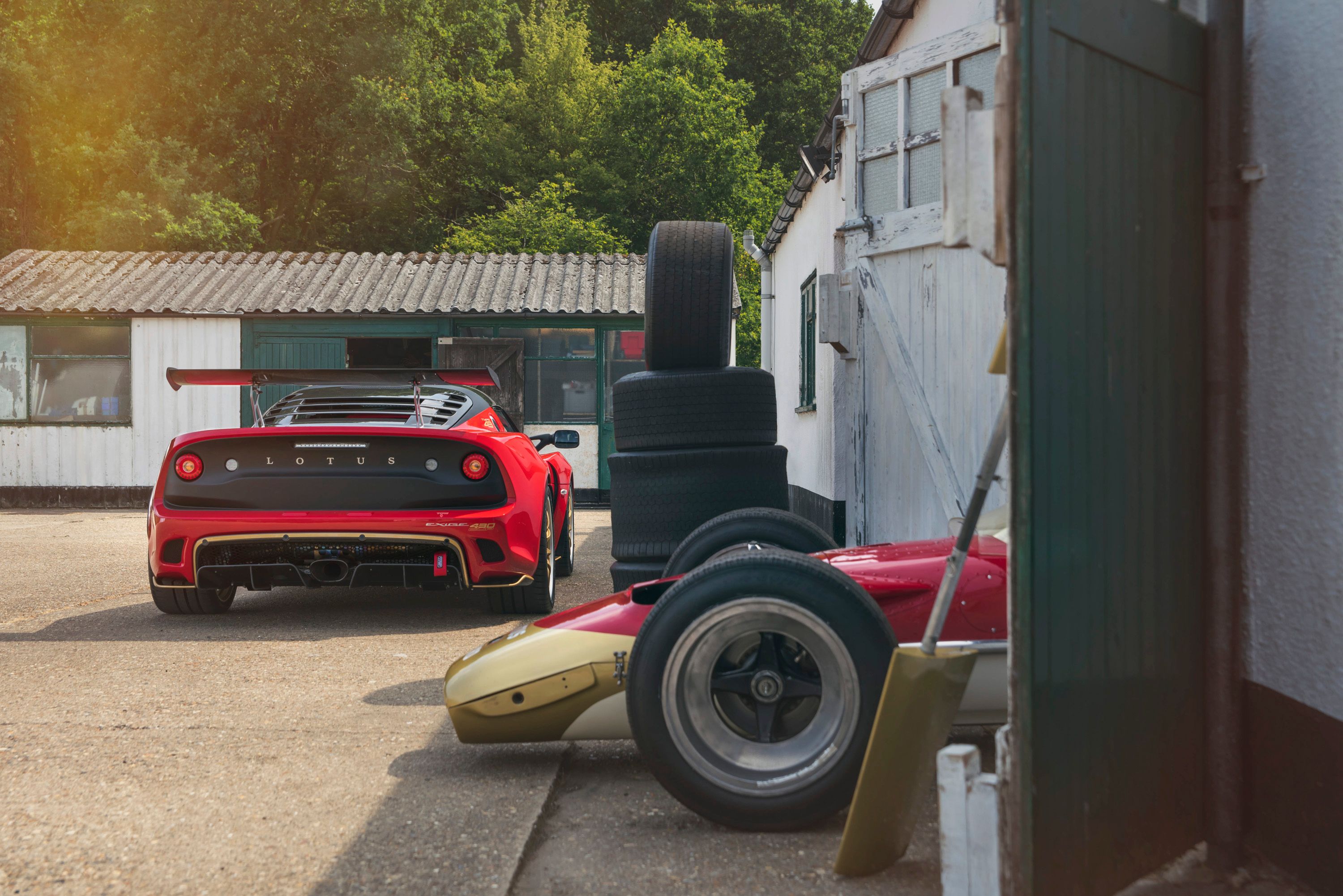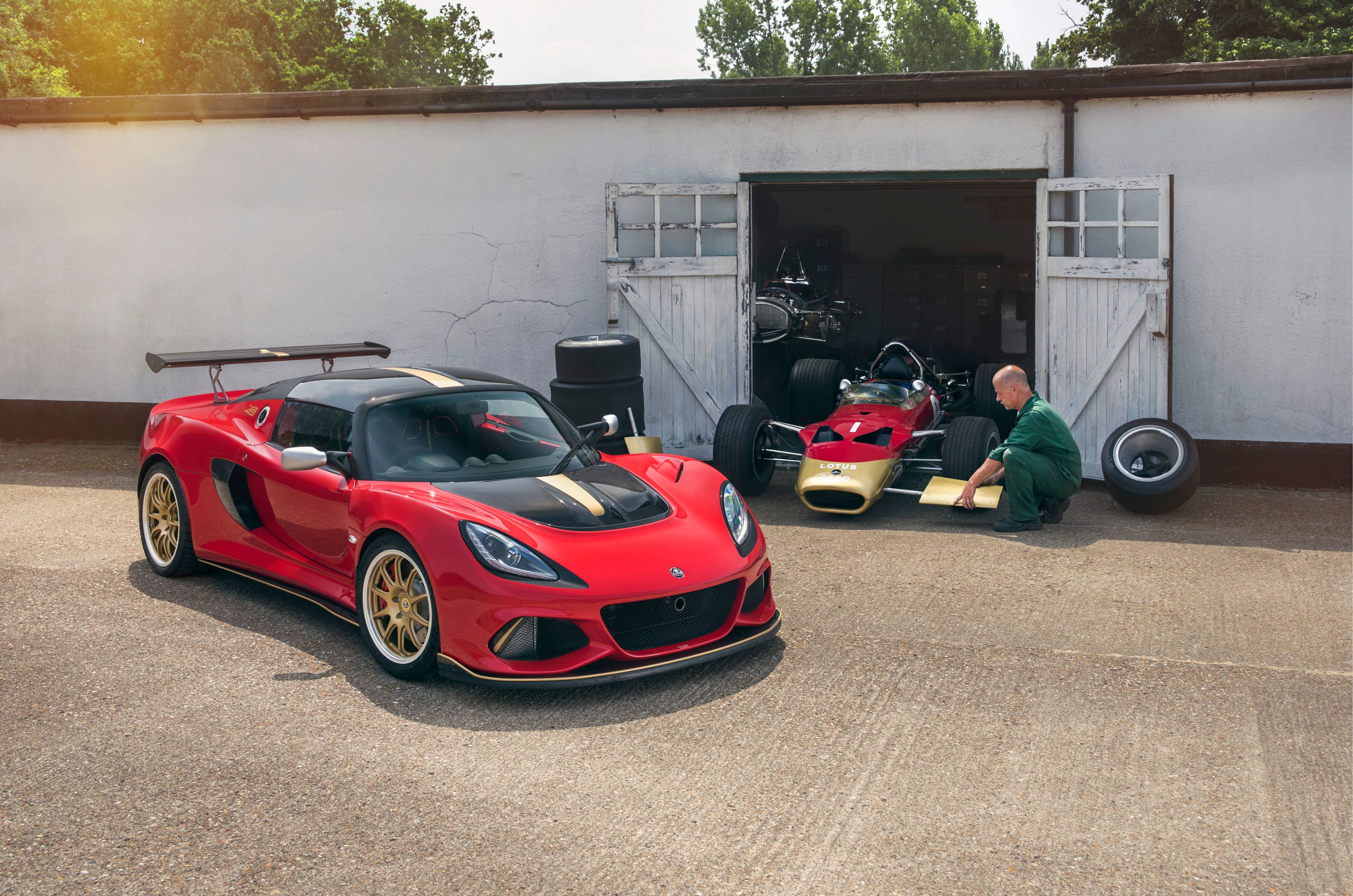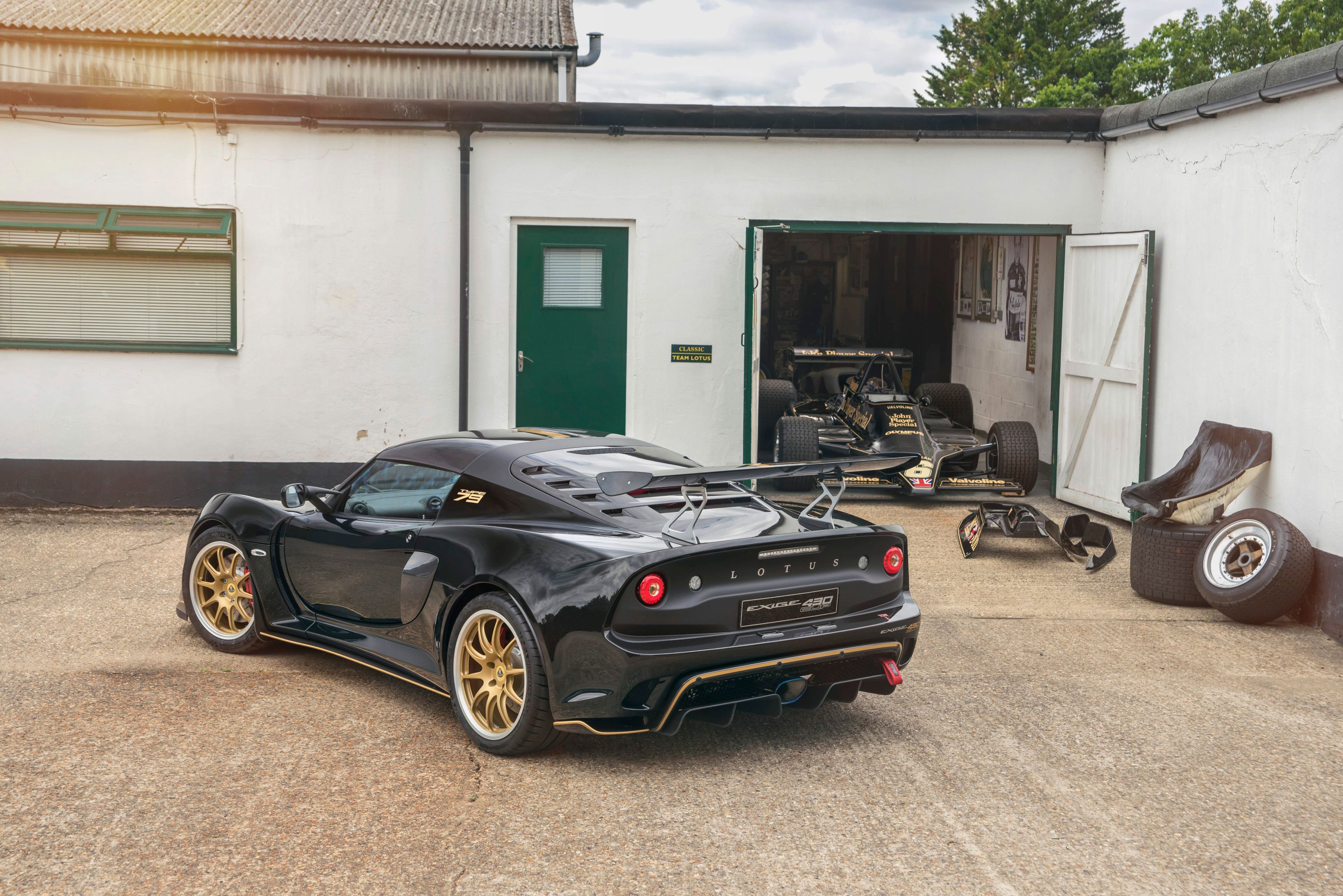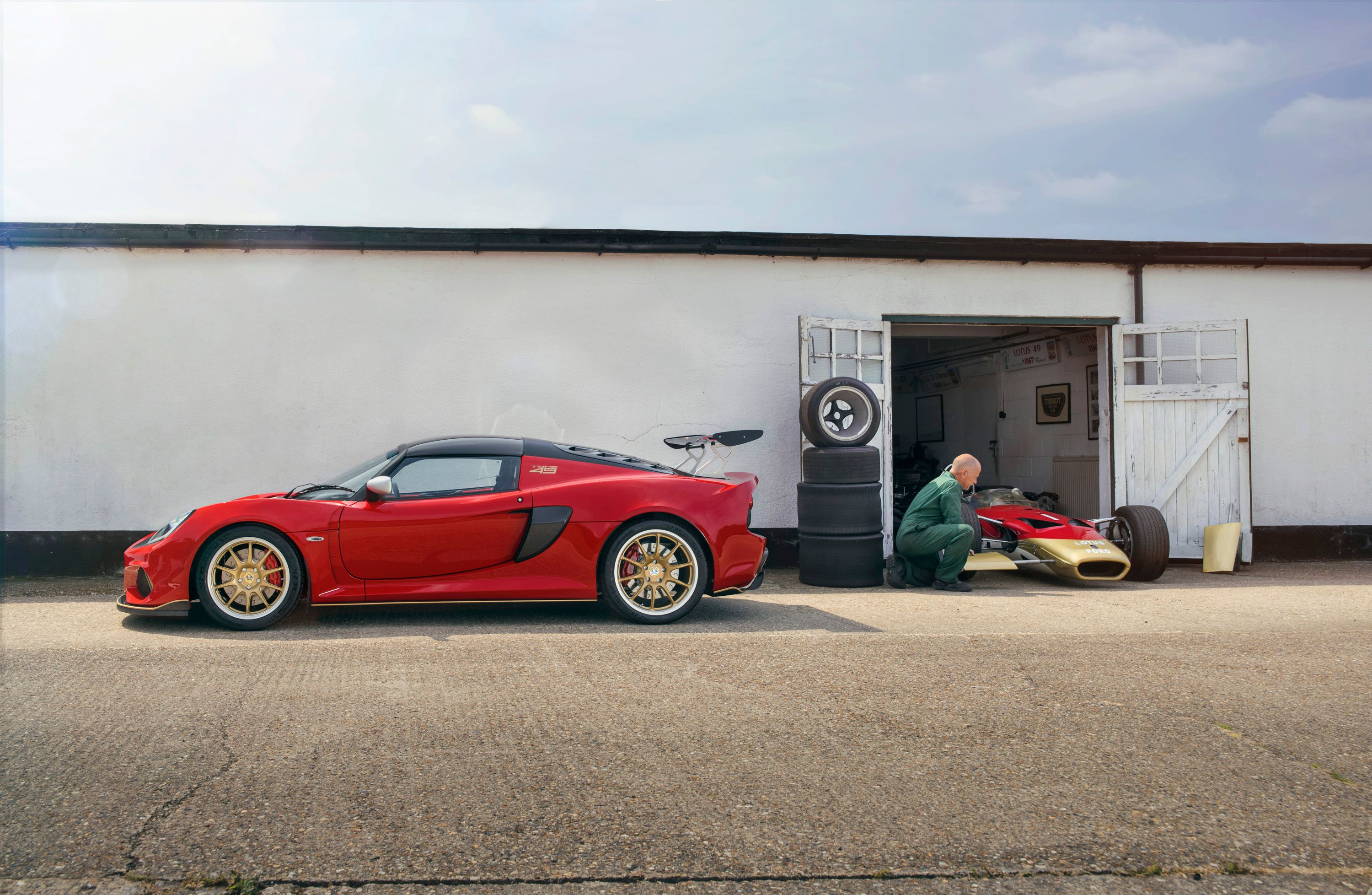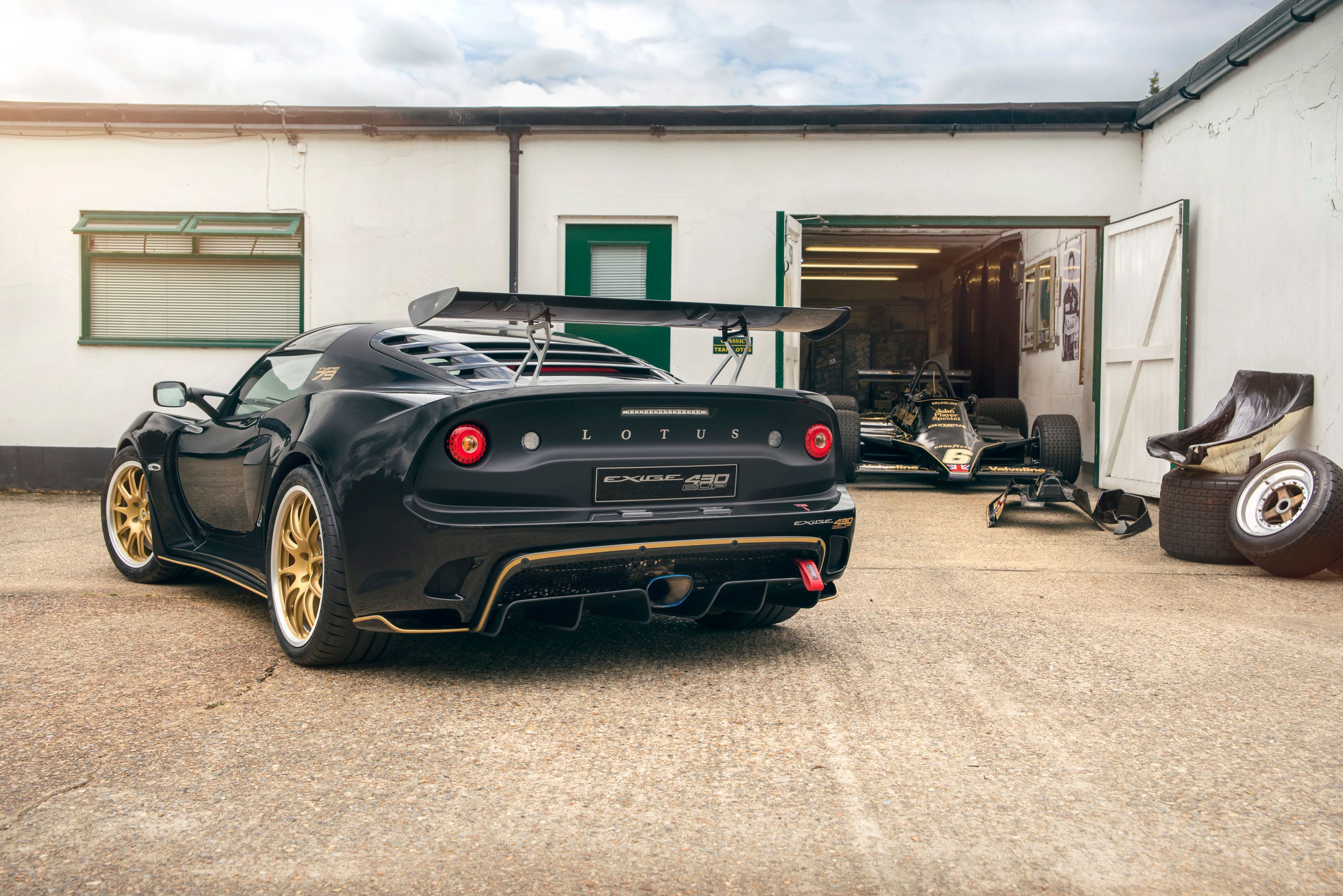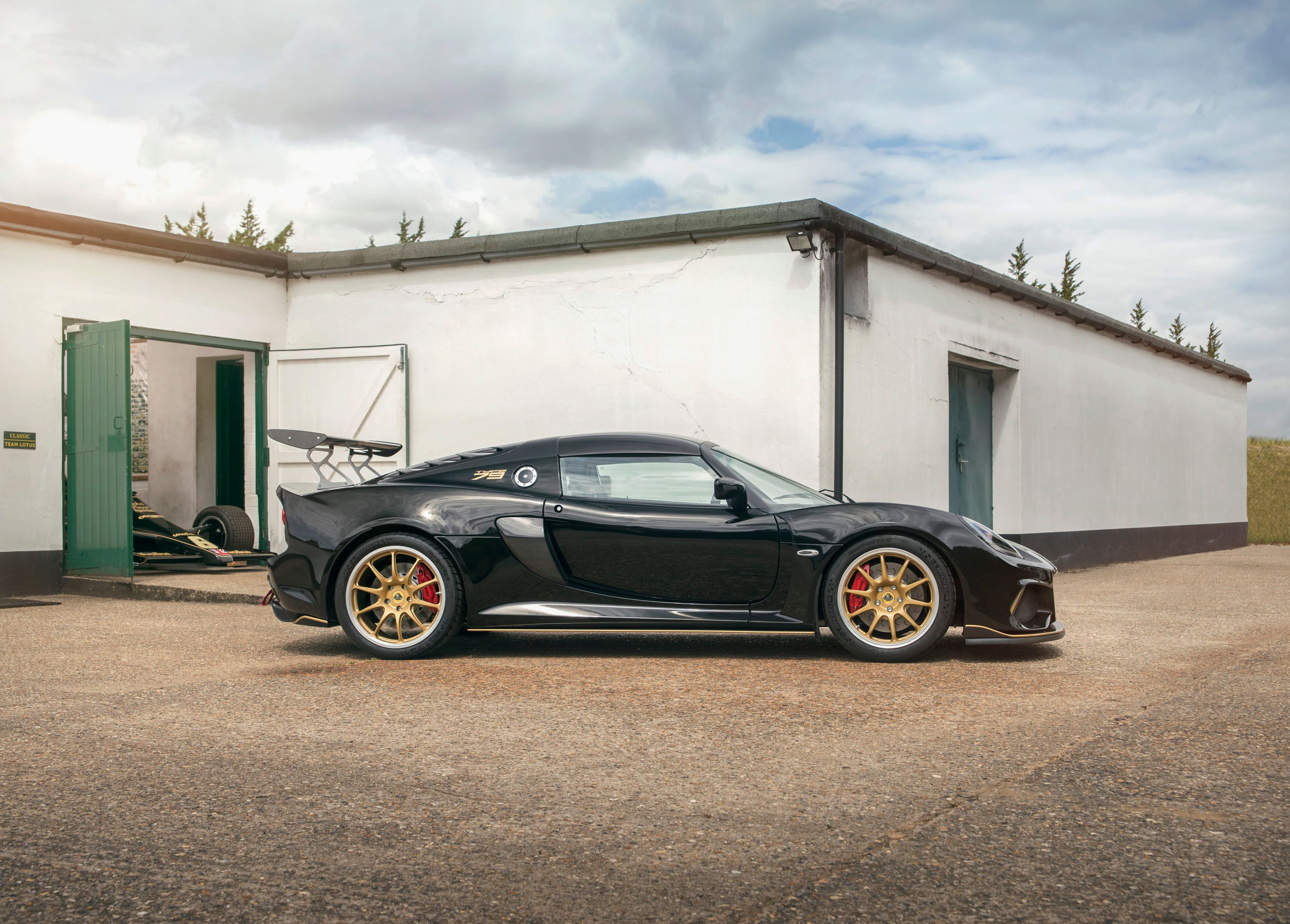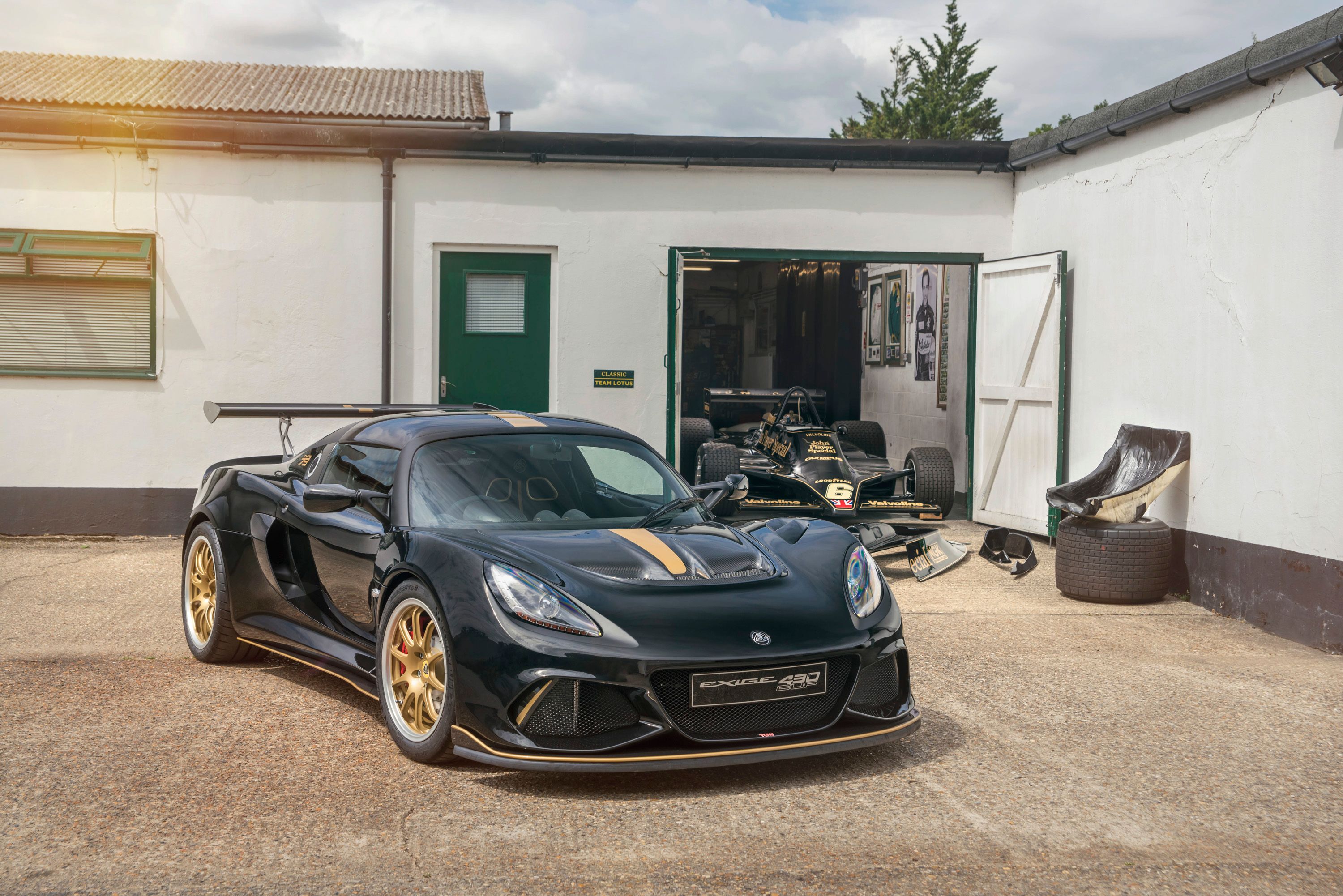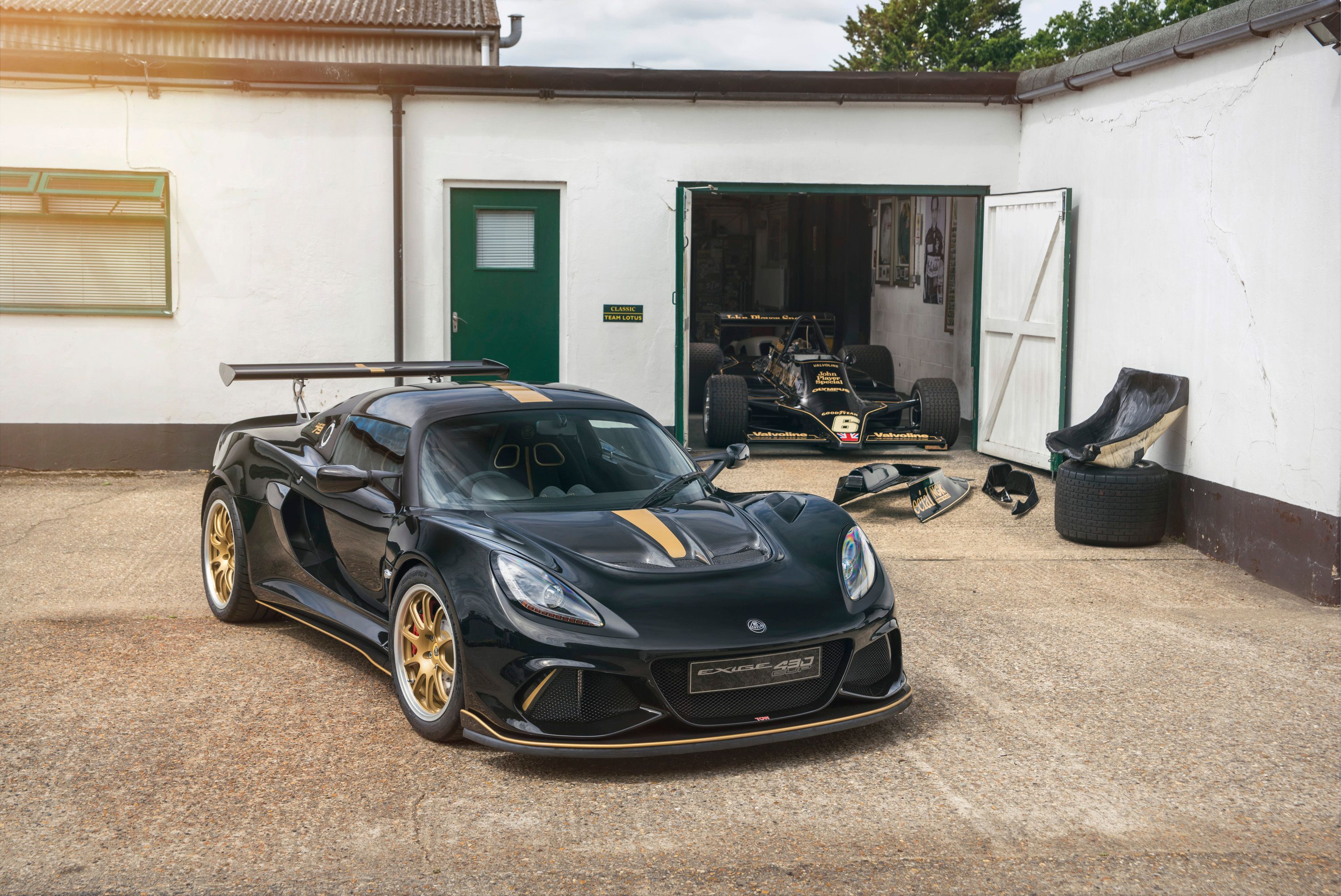The third-generation Lotus Exige is six years old as of 2018 and a bit long in the tooth. A brand-new model is underway, but the Brits are keeping things interesting for the current model by building all sorts of special editions. At the 2018 Goodwood Festival of Speed, Lotus paid tribute to two of its most iconic race cars with the Exige Type 49 and Exige Type 79.
Both cars celebrate the company's past glory in Formula One. The Exige Type 49 marks 50 years since Graham Hill won both the drivers' and constructors' championships in the Type 49, while the Exige Type 49 marks 40 years since Mario Andretti did the same with the Type 79. The former race from 1967 through 1970 and won two championships, while also scoring podiums in each season. The Type 79's career was a bit shorter, from 1978 through 1979.
Both Exige models were crafted by Lotus Exclusive, the brand's recently established bespoke division. Let's find out more about them below.
Continue reading to learn more about the Lotus Exige Type 49 and Type 49.
2018 Lotus Exige Type 49 and Type 79
- Make: Array
- Model: 2018 Lotus Exige Type 49 and Type 79
What Makes the Lotus Exige Type 49 and Type 49 Special
Design-wise, the two cars are significantly different from what you can already get from Lotus. It's only the liveries that make a difference, as both are based on the Formula One cars they are named after.
The Type 49 features a red body with gold accents on the splitter, front hood, side skirts, roof, wing, and diffuser. These colors are taken off Graham Hill's Type 49 from the late 1960s. Although the Type 49 is a bit more famous in green, I like that Lotus went with something different for this special edition. The Exige Type 49 has the same accents, but it's painted in black to revive the iconic John Player Lotus livery from 1978. Both cars have gold wheels that hide red braking calipers and "Type 49" and "Type 79" lettering on their B-pillars.
It might not sound like much, but these special-edition models are already aggressive enough as they are based on the Exige Cup 430. The lightest and more menacing version of the Exige yet, the Cup 430 comes with a big list of improvements, including a big splitter, bigger side skirts, a massive rear wing, and an array of carbon-fiber bits. The aero package enables the car to produce up to 485 pounds of downforce at high speed.
Inside the cabin, the Exige 430 boasts extra carbon-fiber on the dashboard, as well as Alcantara on the dash, steering wheel, and door panels. Leather or tartan upholstery is also offered as a no-cost option. The Type 49 and Type 79 get a few extras like carbon-fiber race seats trimmed in black Alcantara and double stitching in either red and gold or black and gold. Similar stitching can be seen on the door panels, center console, and dashboard, while the door sills and instrument cluster cover have anodized aluminum and carbon-fiber trim. The open-gate shifter has a wooden knob, yet another tribute to classic Formula One cars.
The drivetrain is identical to the standard Exige Cup 430, but this is good news really. The sports car packs the company's supercharged, 3.5-liter V-6, which cranks out 430 horsepower and 325 pound-feet of twist. The engine is backed by a revised intake and larger throttle body, as well as a new oil cooler and high-flow titanium exhaust as standard.
All that oomph hits the rear axle through a six-speed manual transmission that works in conjunction with a new, high-performance clutch. The sprint from 0 to 60 mph takes only 3.2 seconds, while top speed is rated at 180 mph.
Pricing info for these special-edition models is not yet available, but expect them to cost a bit more than the £99,800 that Lotus asks for the regular Exige Cup 430.
Further reading
Read our full review on the 2018 Lotus Exige Sport 410.
Read our full review on the 2017 Lotus Exige Cup 430.
Read our full review on the 2017 Lotus Exige.
Read our full review on the 2016 Lotus Exige Sport 350.
Read more Goodwood Festival of Speed.
Read more Lotus news.

